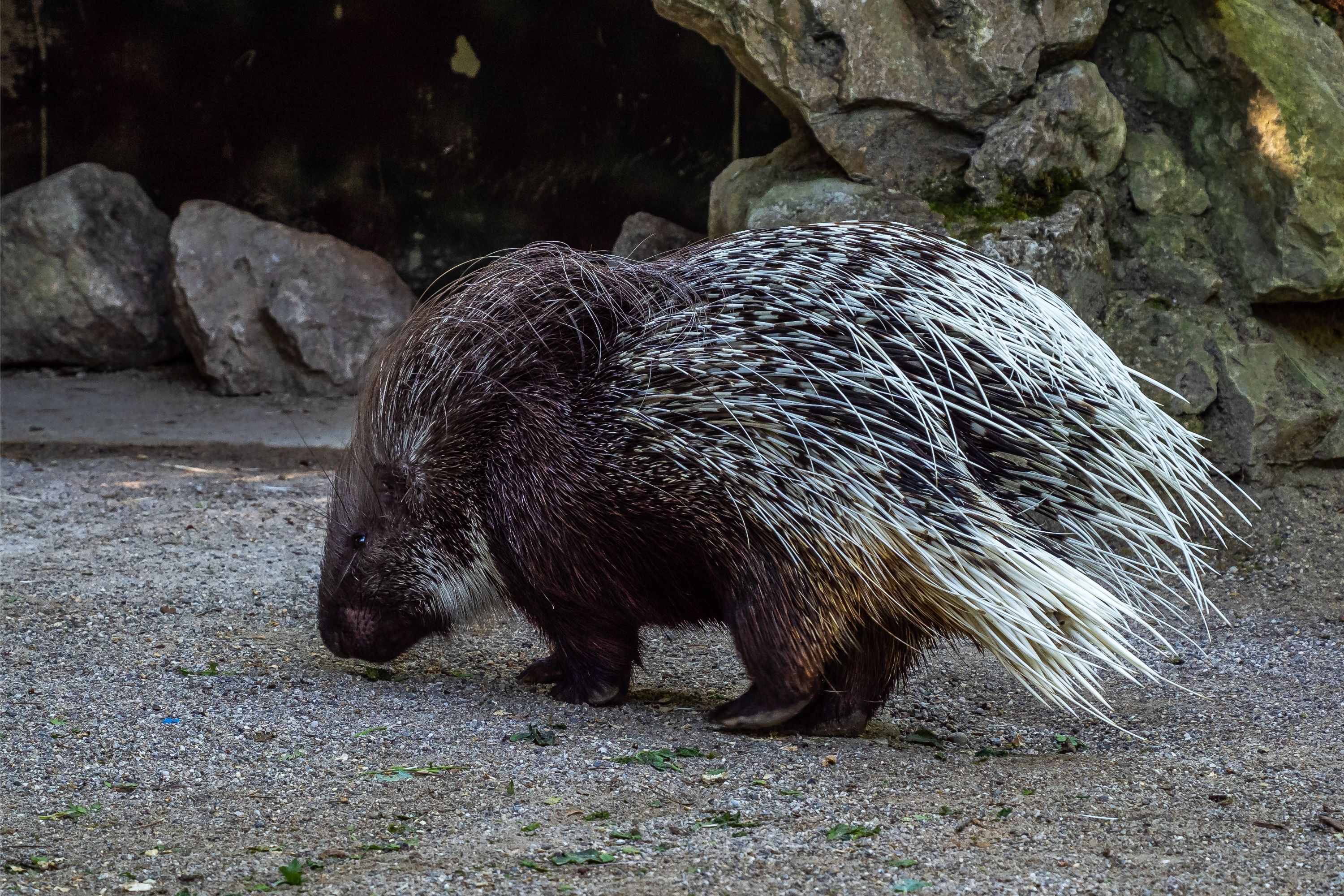Indian crested porcupine
(Hystrix indica)

Description
The Indian crested porcupine (Hystrix indica) is a hystricomorph rodent species native to southern Asia and the Middle East. It is covered in multiple layers of modified hair called quills, with longer, thinner quills covering a layer of shorter, thicker ones.The quills are brown or black with alternating white and black bands.They are made of keratin and are relatively flexible. Each quill is connected to a muscle at its base, allowing the porcupine to raise its quills when it feels threatened. The longest quills are located on the neck and shoulder, where the quills form a "skirt" around the animal. These quills can grow up to 51 cm (20 in) long,with most measuring between 15 and 30 cm (5.9 and 11.8 in).Smaller (20 cm) and more rigid quills are packed densely on the back and rump.These smaller quills are used to stab at potential threats. The base of the tail contains shorter quills that appear white in color, with longer, hollow quills that the porcupine can rattle to produce a warning sound when threatened. Contrary to popular belief, Indian crested porcupines (like all porcupines) cannot shoot their quills. The Indian crested porcupine has a stocky build with a low surface area to volume ratio, which aids in heat conservation.It has broad feet with long claws used for burrowing.Like all porcupines, the Indian crested porcupine has a good sense of smell and sharp, chisel-like incisors. Indian crested porcupines are found throughout southwest and central Asia,including Afghanistan, Armenia, Azerbaijan, China, Georgia, India, Iran, Iraq, Israel, Jordan, Kazakhstan, Kyrgyzstan, Lebanon, Nepal, Pakistan, Saudi Arabia, Sri Lanka, Turkey, Turkmenistan, and Yemen.Due to their flexible environmental tolerances, Indian crested porcupines occupy a broad range of habitats. They prefer rocky hillsides,but are also common in tropical and temperate shrublands, grasslands, forests, plantations, and gardens.Their range seems to be limited by seasonal densities of forage and the availability of suitable substrates for digging burrows.More specifically, the northern range of the Indian crested porcupine is limited by minimum summer night duration: they do not occur above latitudes where minimum night duration is less than 7 hours, presumably because of the amount of foraging time required to meet their dietary needs.
Taxonomic tree:







